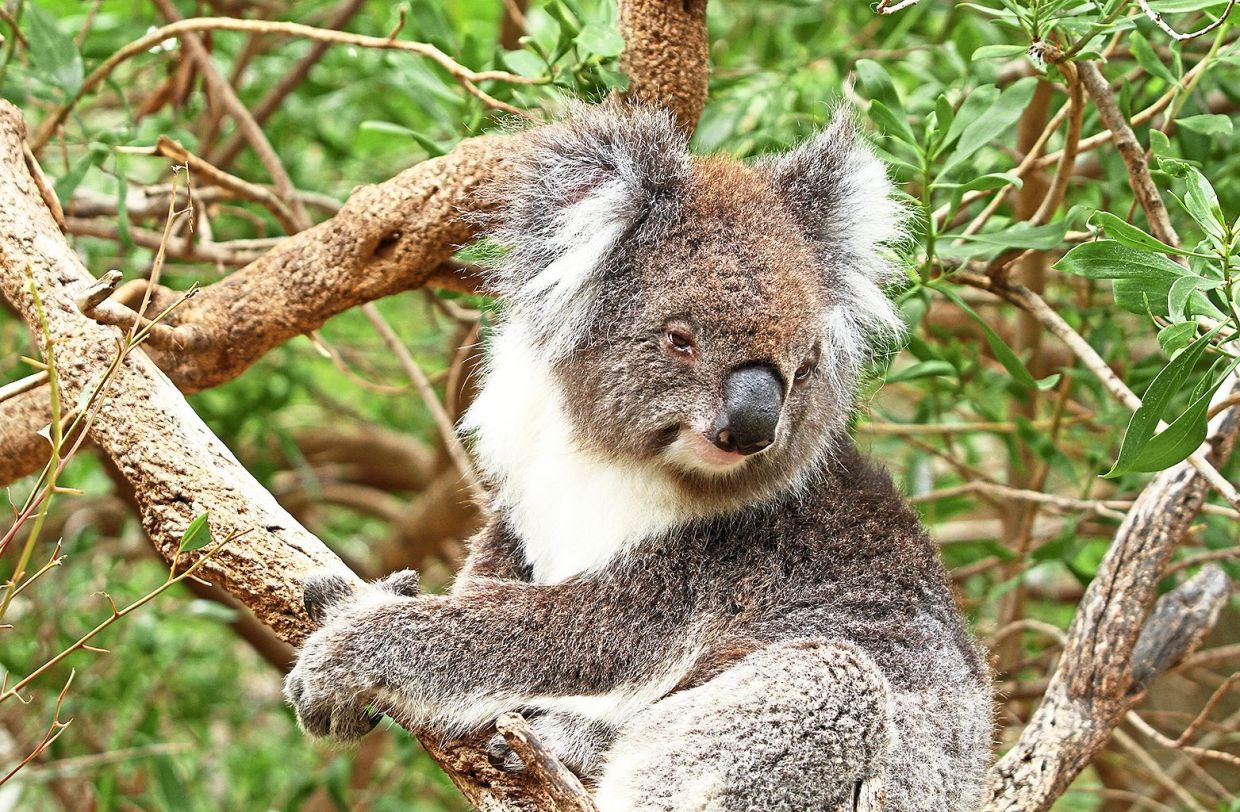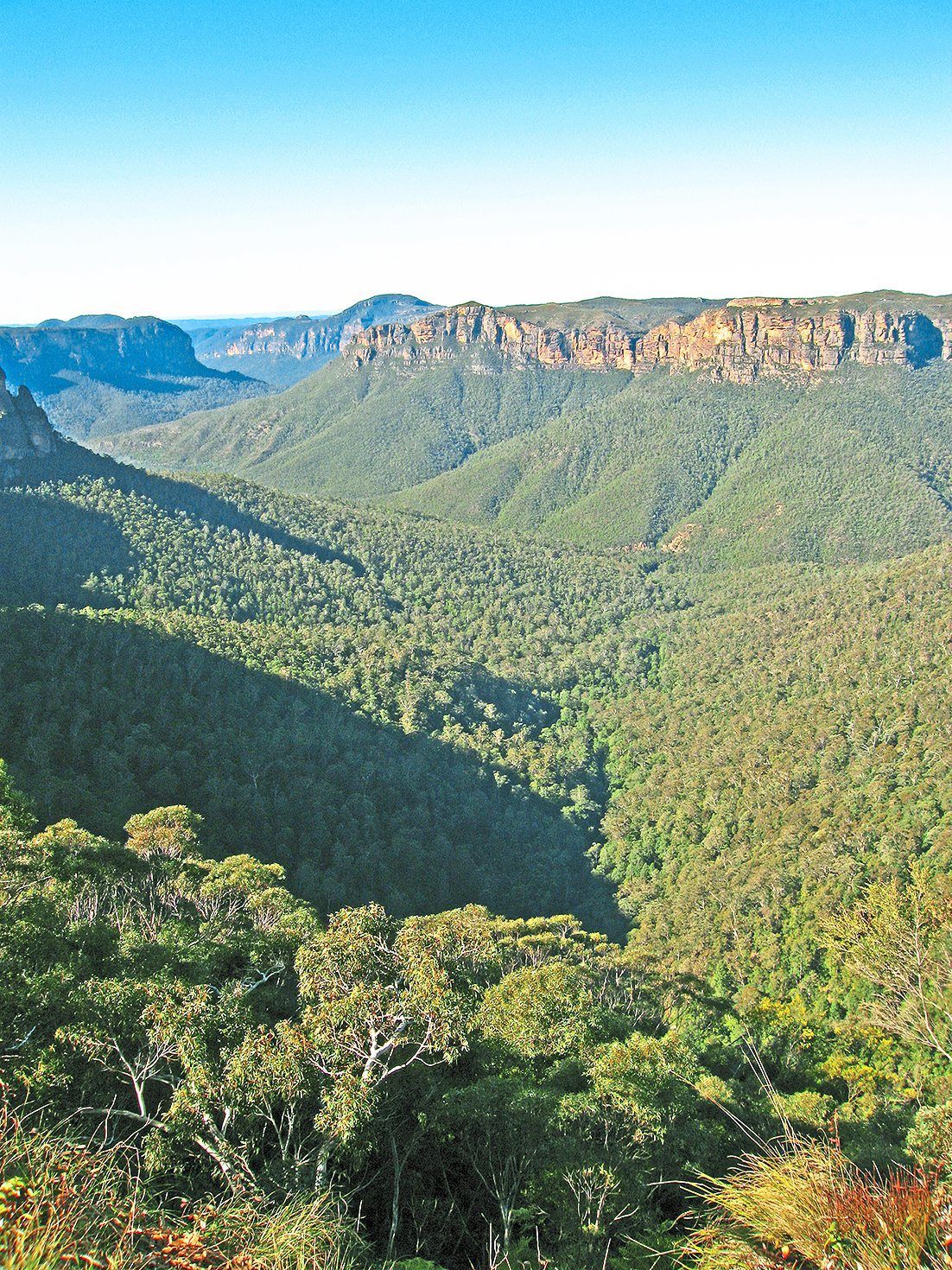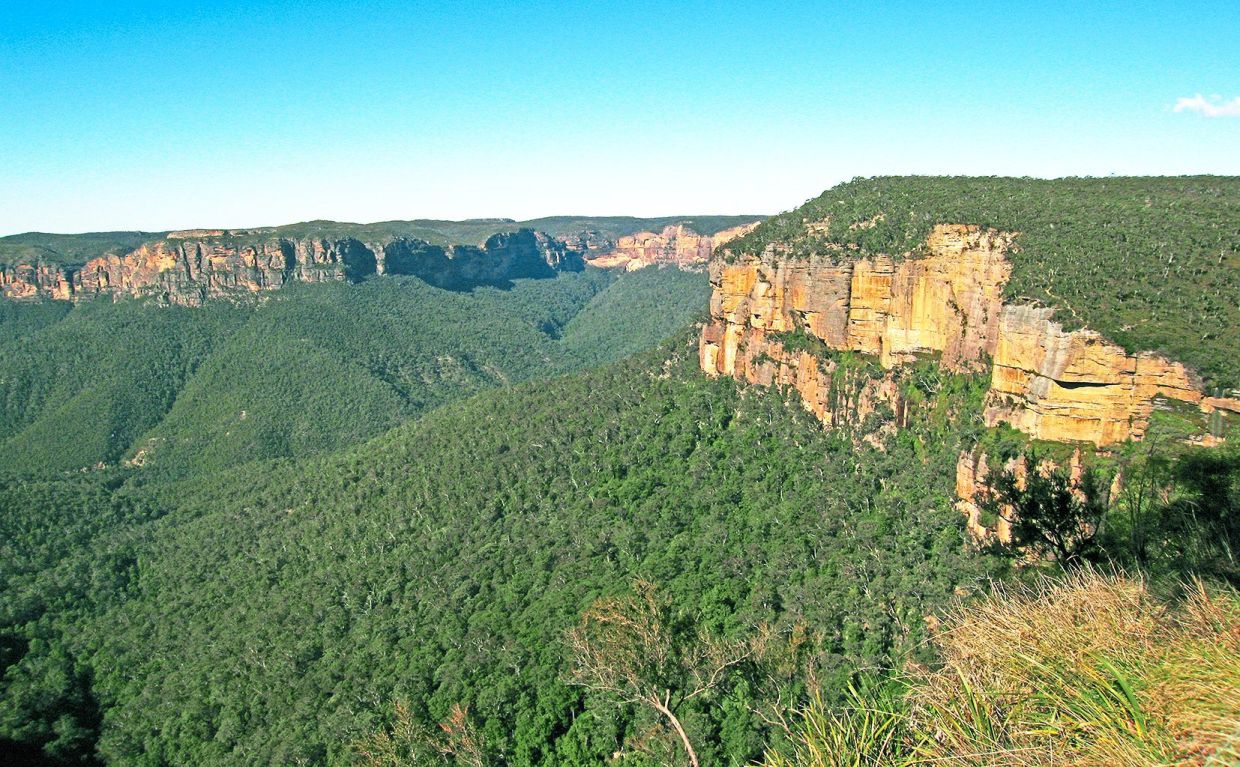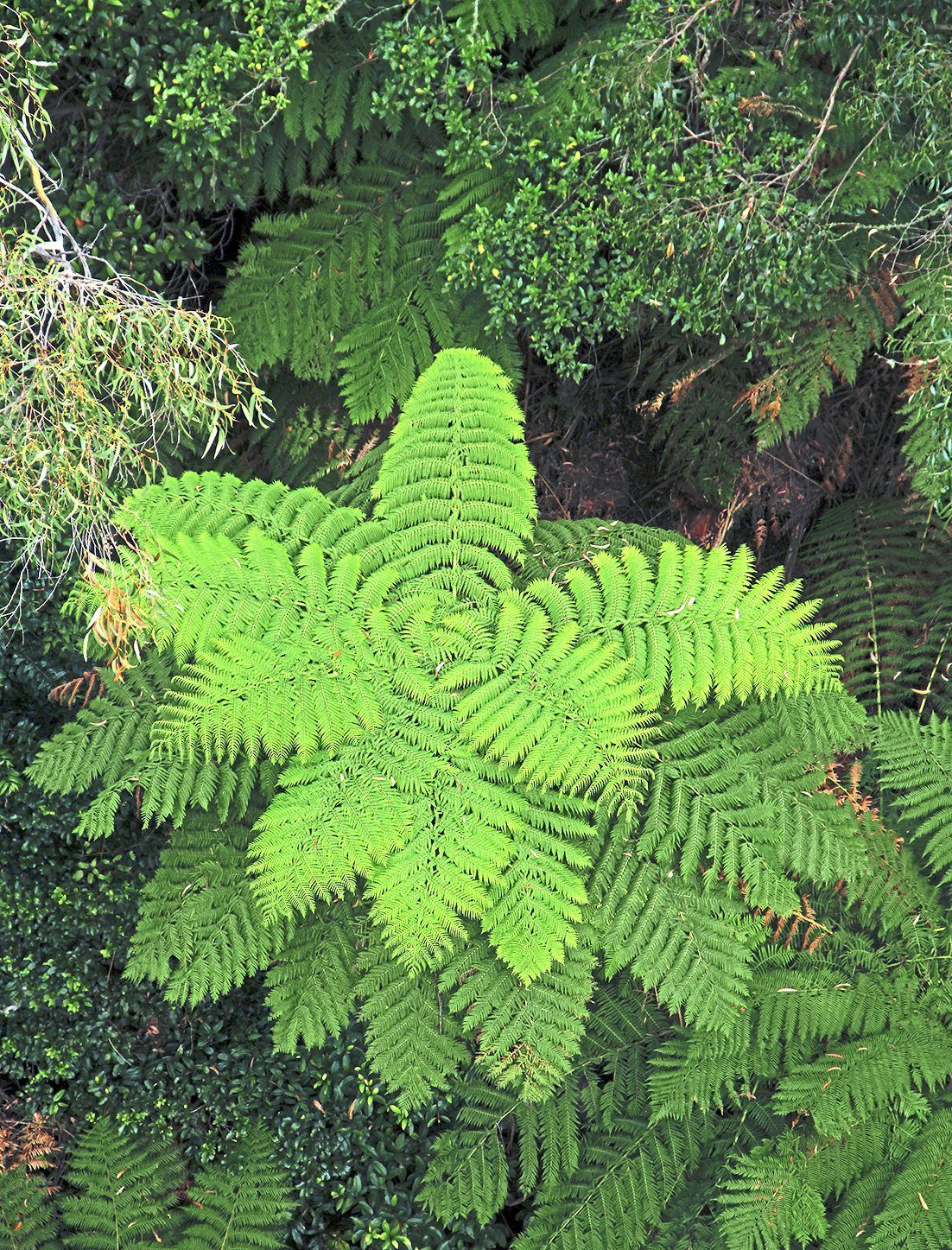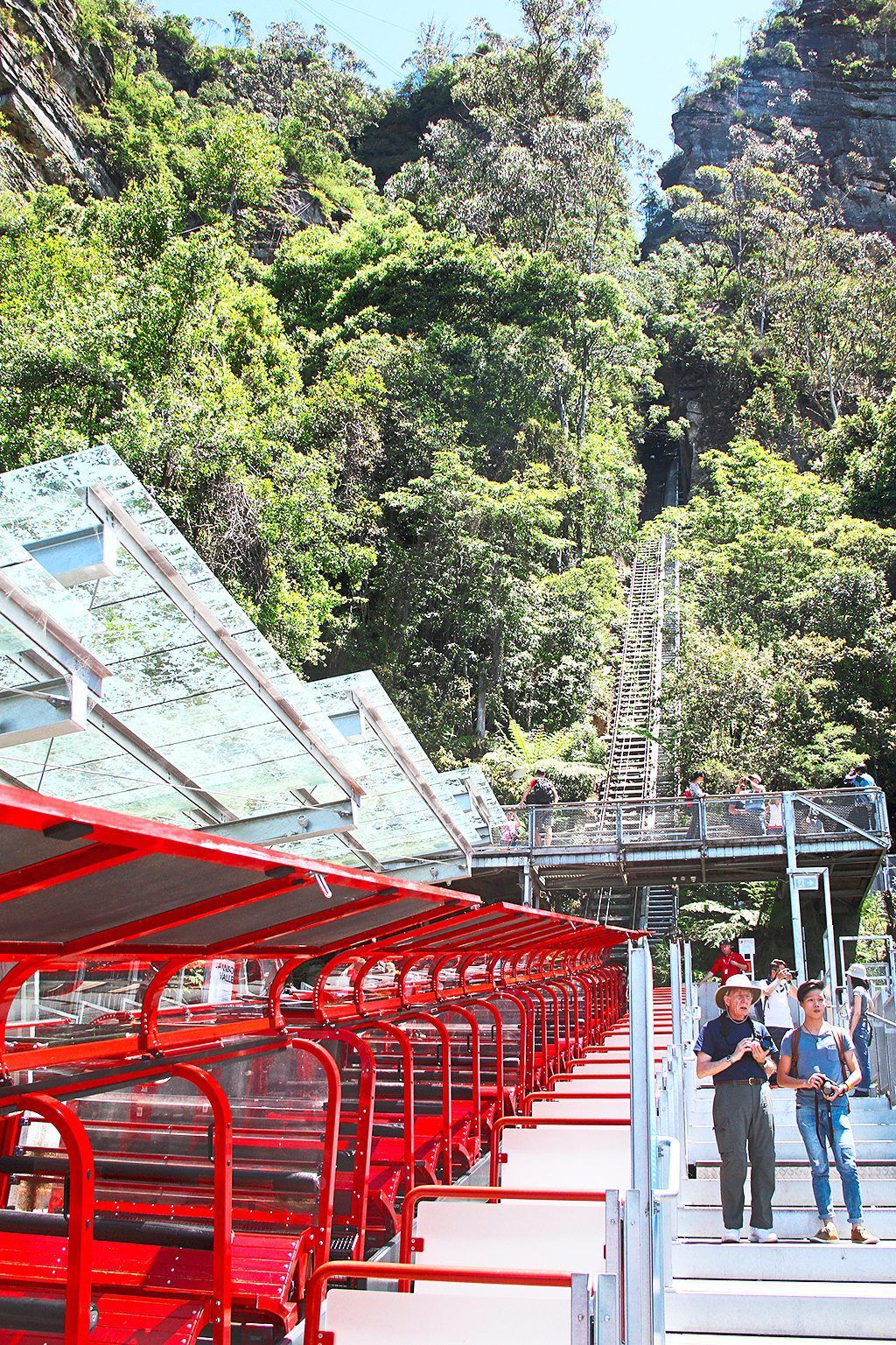While not a common sight, observant walkers may see Australia’s iconic Koala. — Photos DAVID BOWDEN
Few cities in the world are blessed with such a large natural playground on their doorstep – over one million hectares, actually (in addition, there is a buffer zone covering 86,200ha).
Australia’s Great Blue Mountains Area Unesco World Heritage Site, to the west and north of Sydney in New South Wales, comprises eight national parks and other conservation reserves that protect great expanses of sandstone plateaus and escarpments blanketed in eucalyptus forests.
Most of these forested areas are remote and pristine wildernesses, while others are more accessible forests that provide relatively easy access for locals and adventurous tourists seeking to immerse themselves in the great Australian outdoors.
As a point of reference, this Unesco site is 13 times bigger than Singapore and 12 times the size of Perlis, and it’s mostly devoid of human life.
The Blue Mountains is located about 90 minutes via train from Sydney, thus ensuring accessibility as a day destination for those visiting on a tight schedule. However, the Blue Mountains warrant several nights of exploration for those with more time on their hands.
A natural haven
It’s ironic that a vast area, best known for its green attractions, is called the Blue Mountains. The bluish forest hues and name of the location are derived from the gases exuded by the eucalyptus forests, and when viewed from most vantage points, the vegetation that blankets the canyons and plateaus of this Unesco site takes on a bluish-green colour.
Over the millennia, the rainwater and streams have carved a myriad of rivulets, gorges, and valleys through the sandstone plateaus, sculpturing the landscape into numerous dramatic natural forms.
While most visitors will only experience these mountains once, the local residents are constantly amazed by the changing colours of the vegetation with each seasonal change. The earliest settlers to the area planted numerous temperate trees to remind them of life back in England, and the autumnal hues of these plants still attract many visitors.
While introduced temperate plants appeal in the autumn, the Unesco site has been established to protect native plants that thrive in eucalyptus forests, heathlands, swamps, grasslands, and wetlands. Some 90 species of eucalyptus have been identified, while 10% of Australia’s vascular plants have been recorded in the Blue Mountains.
Some are endemic (114), and many are threatened (177). While few visitors will ever see one, the Wollemi Pine (Wollemia nobilis) occurs in distinct Blue Mountains microhabitats. The plant is new to botany, having only been discovered in 1994 by adventurer David Noble, after whom it is named.
Interestingly, this endemic, critically endangered conifer is not a pine but rather a member of the Wollemia genus and it is the only recorded species in the genus.
In addition to the flora, one of the main attractions of the Blue Mountains has always been the refreshingly crisp, cool air. The recreational activities on offer in the mountains also vary with the seasons.
Log fires and cream teas are popular with many visitors in the winter, with picnics and bushwalking being more popular in the warmer months.
The sheer natural beauty of the mountains is the other major attraction for visitors. The small towns that dot the highway from Sydney and over the mountains to the Western Plains are restricted to the ridge tops, while the steep canyon walls of the Unesco site are never too far from towns such as Wentworth Falls, Blaxland, Leura, Katoomba, and Blackheath.
Numerous well-marked walking trails crisscross the forests of the Blue Mountains to provide endless opportunities for hikers to access a variety of landmarks. Trails are as short as 30 minutes, while others require several days, specialised equipment, and a guide to access.
There are readily available maps, trail brochures, and apps that provide details of the many highlights and features of each walk.
Most walks are accessible to those with average fitness levels, but for every descent into the valley, there is an equal and often more tiring ascent at the other end.
Many waterfalls cascade from the plateaus to the valley floors below. In these moist environments, ferns, mosses, and orchids dominate the vegetation. Rainbow Lorikeets and over 250 other bird species also thrive in this habitat and are frequently admired by bushwalkers.
Wentworth Falls is perhaps the most spectacular sight, especially after heavy rains flow into the streams and down the cascading falls. The spray from these falls casts a fine mist over the lush vegetation surrounding the falls.
A breath of fresh air
For several generations of holidaying Australians, the Blue Mountains have provided a breath of fresh air, a retreat for relaxation, and inspiration for those artistically inclined.
Several quaint old-style guesthouses are much the same as they were decades ago. The interiors of some have been renovated to preserve a bygone era when a well-deserved holiday was limited to a train journey from Sydney.
Many of the resorts and hotels that have been built more recently have adopted architectural styles that blend in with those of the past. For those requiring full resort facilities, the MGallery Fairmont Resort Blue Mountains is perfectly situated to maximise the dramatic views.
The refreshing mountain air at the resort is ideal for golf, tennis, archery, squash, or just resting in a sauna bath. Bicycles can also be hired to explore the many charming antique shops in nearby Leura.
Judging by the number of fine restaurants in the mountains, it would seem that fresh air and eating complement each other. Some of Sydney’s finest chefs have been attracted to the relaxed holiday atmosphere of the mountains. Nothing seems rushed, and long Sunday lunches are particularly popular for those venturing up from the city for the day. Some of the best restaurants include Darley’s at Lilianfels, Wintergarden at the Hydro Majestic, and Embers at the Fairmont.
Mid-year seems to be a strange time to celebrate Christmas, but that is when the Blue Mountains Yulefest is staged. The cooler winter weather is what inspired a few English people a decade or so ago to host Yulefest. They found discomfort in celebrating Christmas during the hot Australian summer and decided July was a more appropriate time.
Years later, it is now almost impossible to get mid-year accommodation in the mountains when many establishments are adorned in holly and imitation snow.
Into the valley below
An essential destination in the Blue Mountains is the Scenic Railway, located at Katoomba Scenic World, just 3km from Katoomba Railway Station. Australia’s shortest and the world’s steepest railway (it descends into the Jamison Valley at an incline of 52o) is not just an exhilarating rail journey for train enthusiasts, as it is also one of the most visited, privately owned tourist attractions in the Southern Hemisphere, attracting many tourists each year. Other attractions here include the Scenic Skyway, the Scenic Cableway, and the Scenic Walkway.
At just 310m, the railway is also Australia’s shortest, but with departures every 10 minutes, it offers the most frequent timetable. This small, semi-open-sided, cog-wheel railway descends at 4m/second from the top of the escarpment through the rainforest to the valley below. The descent into the Jamison Valley can be steeper through adjustable seats that can be reclined to 62o for a “cliff-hanger ride”. Its four glass-roofed carriages can accommodate 84 passengers and a driver.
In the valley, well-constructed pathways provide access to the lush forests below and traces of the mining that was once conducted here. A two-car coal skip was converted and used to transport tourists, and when mining ceased in the 1930s, a local entrepreneur realised the railway’s potential for tourism.
Tall tree ferns are a feature of the forest of the Unesco World Heritage Site, with majestic Hawkesbury Blue Gums piercing the canopy.
While visitors can ride the train back up the escarpment, there is also the 510m-long Scenic Cableway that gently ascends back to the top. Its fully enclosed cabin has panoramic windows to provide elevated views of the Scenic Railway. At the top, the 720m Scenic Skyway traverses across a 270-m steep ravine where spectacular views of Katoomba Falls and the rainforest below are provided through a section of glass flooring and panoramic windows.
The Blue Mountains are included on day-visit itineraries for many visitors, but the attractions in the mountains will especially appeal to those who love extended outdoor adventures. Others will enjoy scouring antique and handicraft shops or taking in the scenery from ridgetop restaurants and cafés. Visitors to Australia fall in love with its rugged beauty, and visitors to Sydney don’t have to travel too far to experience its charm.
Travel Notes
Getting there: There are direct flights from Kuala Lumpur to Sydney. Take the train, a tour, or hire a car to reach Katoomba, some 90 minutes from Sydney.
Where to stay: MGallery Fairmont Resort Blue Mountains, overlooking Sublime Point at Leura, is ideally located to admire the scenery, while a little further westward, the Hydro Majestic Hotel Blue Mountains offers spectacular views of the Megalong Valley.
More info: Blue Mountains Australia, Destination NSW (destinationnsw.com.au), National Parks and Wildlife Services (nationalparks.nsw.gov.au), and Scenic Railway (scenicworld.com.au).
Great Blue Mountains Area
While not a common sight, observant walkers may see Australia’s iconic Koala. — Photos DAVID BOWDEN
The Fairmont Resort & Spa offers one of the best views of the area. — MGallery
Fairmont Resort & Spa Blue Mountains MGallery





